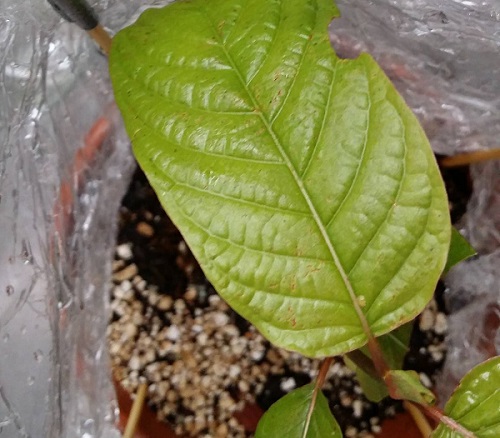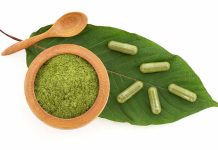Many people fail to obtain authentic information regarding Kratom since it is a relatively new substance in the Industry of medicinal drugs and has just recently gained popularity. There are many misconceptions about Kratom use, with a lot of people believing that the drug is susceptible to degradation. Some people think that the plant can degrade due to changes in temperature, light, and moisture. While the first two Ideas may seem misplaced, there is much reality in the third one.
Humidity can affect the efficiency of Kratom, due to which storing the substance becomes a significant problem in humid areas. This article explains what can be done if Kratom gets moisture.
Kratom, scientifically called Mitragyna speciosa, is an evergreen tree native to the tropical regions of Southeast Asia. For hundreds of years, it has been used traditionally for its pain-relieving, sedating and anxiolytic properties. Lately, the plant has found fame across the world for its medicinal and therapeutic effects.
The plant is consumed by people suffering from chronic pain, stress, anxiety, depression, menstrual cramps, muscle spasms, seizures, inflammation and various other health problems.
What is the shelf life of Kratom?
Kratom leaves are an organic substance. Its shelf life, therefore, is not like other manufactured products and doesn’t have a fixed date of expiration. Kratom, however, like all herbal plants may be affected by external conditions that can lead to long-term damage to the substance and its components.
Properties such as Kratom color, smell, taste, potency, and efficiency may get compromised if it is not stored correctly. In general, Kratom can have a very long shelf life and can be used for years if stored with care.
How to store Kratom?
-
Store in a dry place
Humidity is, perhaps, the greatest enemy of your Kratom reserves. Even a small amount of moisture will cause mold growth on the leaves and completely spoil the product.
To keep your sample protected, make sure you store it in a place that doesn’t have high vapor content.
Avoid keeping the product in kitchens where you boil water, steam food or cook sizzlers. Never keep the powder in bathroom cabinets as the area can get very humid after a hot shower.
Store your Kratom in a sealed jar.
You can put the powder in a ziplock baggie and place the baggie in a pot for additional safety.
-
Store in airtight places away from oxygen
Kratom can undergo some chemical reactions if exposed for long periods of time to air. Oxygen in the air can cause Mitragynine, the main compound found in Kratom, to decompose into Mitragynine pseudoindoxyl.
To prevent this from happening, store your Kratom in a bag with a vacuum seal. You can achieve this at home by sucking all the air out of a ziplock baggie through a straw inserted at the corner of the baggie. Some people advice to store Kratom in glass canning jars as an extra precaution because plastic does breathe.
-
Store away from intense heat and light
When storing Kratom, make sure it is no place near direct sunlight because it is believed that the ultraviolet rays of the sun can change the molecular makeup of the Kratom making it less potent.
It is also advised to keep it away from heat because high temperatures can cause the quality of Kratom to decrease and result in the plant losing its natural potency. There is, however, no established evidence where users have detected any significant changes in their Kratom strains when kept near heat or light.
-
Store in a cool place
It is not necessary to store Kratom in a freezer, and for many people, room temperature works just fine. The freezer, however, has an advantage as it slows down the speed of losing electrons/molecular degradation. It is important to note that when you freeze or store Kratom in the refrigerator, let it come to room temperature after taking it out, otherwise opening while cold will suck in all the moisture and promote mold growth.
How do we know if Kratom has Moisture?
People sometimes find it hard to figure out whether their product has moisture or not. You can determine if your Kratom has moisture if it’s coarse and dense. If, however, it sticks to everything like talc powder, and if you can make fingerprints on the glass with it, then it’s probably high quality.
The finer the grind, the higher the quality of the product is, and the wetter it may seem to appear. It is important not to confuse your finely powdered Kratom for apparent moisture.
What to do when Kratom gets moisture?
When we said moisture is the worst enemy of Kratom, we meant it. Usually, people ignore the moist, clumpy texture of the powder and consume the substance anyway. This works as long as you have tagged you Kratom supply and are sure that your reserve is pretty fresh.
If your store is small, it is often okay to quickly consume the product before any mold builds on it. However, you can never be 100% sure, and even the smallest amount of mold on the leaves can completely spoil the product.
It is, therefore, recommended that you discard the entire contents if you find it moist and are not sure on mold growth because even accidental contact with mold can quickly bring on sickness.
Another useful method is to spread out the damp Kratom leaves/powder and either leave it to dry naturally or heat it very mildly in an oven.
This is an effective way to get rid of the moisture before storing it back in a sealed container, in which case it is very likely to get stale and spoiled. Some people also use dehydrating agents such as silica gel, to get rid of the moisture effectively.
Users’ opinion about moisture in Kratom
While some users on Reddit commented that moisture in Kratom is very usual and can happen from time to time, and is, therefore, safe to consume, others were of the view that moist Kratom is not to be risked. They stated that the expense of a visit to the Doctor might probably outweigh the original investment in the Kratom. The thread was however concise, and there weren’t any experienced views regarding the topic.
Conclusion
To be on the safe side, users are recommended not to consume any strains of Kratom that are believed to have moisture and are susceptible to mold growth. It is advised to follow the safe storage methods for Kratom to avoid any later inconvenience.








